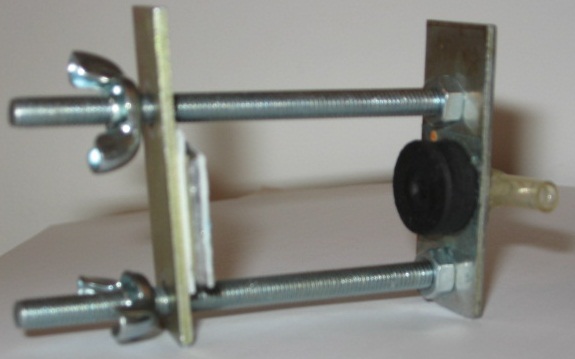Today I wanted to refill the BCI-3bk cartridge and obviously I could not use the small orange cap.
So I modified the holder by replacing the cap with a gasket used in a type of water tap stopcock.

Now I can use it for both type of cartridges.
So I modified the holder by replacing the cap with a gasket used in a type of water tap stopcock.

Now I can use it for both type of cartridges.

